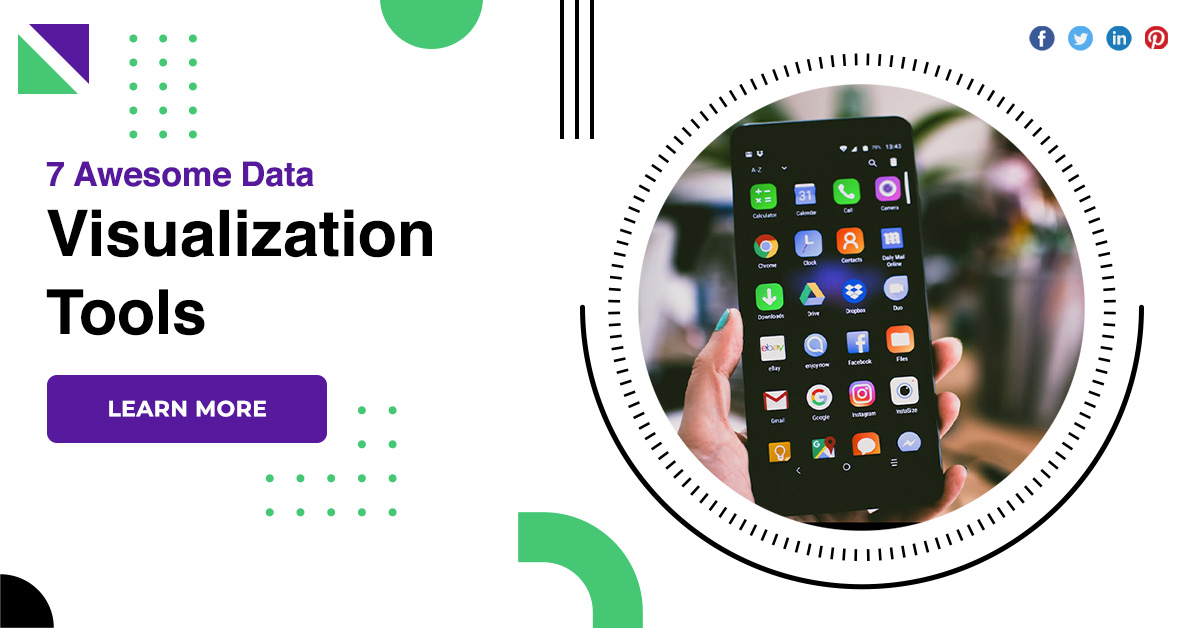If your company deals with big data, data analysis and visualization is an essential tool for effective understanding and insights. There are several tools available in this sector that promise to transform raw data and create solutions that are easy to understand. Here are 7 of the best data visualization tools you can hire to get the most out of your data.
Data visualization tools
-
Tableau
Tableau is one of the most used data visualization software due to its user friendly, intuitive design and excellent official support documentation. This data analysis and visualization tool is available in five different versions Desktop, Server, Online, Mobile and free-to-use Tableau Public. It has the capacity to produce interactive visualizations that are compatible with the huge and very fast-changing datasets used in big data operations involving artificial intelligence and machine learning applications. It is designed to work great with almost all advanced database solutions such as Hadoop, Amazon AWS, My SQL, SAP and Teradata.
-
Sisense
Sisense data visualization tool. This tool is smartly designed to provide a complete analytics platform with ease of use. The interface offers users the ability to easily drag and drop charts and more complex graphics to achieve interactive visualizations without much hassle. The tool has the ability to collect data from multiple sources and instantly query it, along with the ability to share a dashboard across organizations.
-
Plot
Plotly is a web-based data visualization platform that allows the user to create simple to complex graphs right in the web browser. It offers a clean, intuitive and fully functional interface for free, but its commercial package provides more user-friendliness and support. Its ability to enable more complex and sophisticated visualization is a direct result of integration with analytical programming languages such as R, Python, and Matlab.
This Javascript-based data analysis and visualization tool has the ability to create 90 different chart types and integrates a large number of platforms and frameworks to offer optimal flexibility. It is one of the leaders in the paid market simply because it offers many live templates where users can simply plug in their data instead of starting from scratch.

-
Google charts
Google is at the forefront of technology and stays on course by providing a full suite of data visualization tools that support a variety of data formats including geolocation and offer a variety of outputs. However, keep in mind that Google Charts is intended for people who have worked with data before and can code in JavaScript to get the most out of this amazing tool.
-
QlikView
QlikView is a major vendor that competes with Tableau for supremacy because it also provides a wide range of features and high customization settings. It takes a while to get used to, but it can be very powerful when used to its full potential. There are many third-party resources available online for this clean and uncluttered tool.
-
Datawrapper
Datawrapper is the perfect tool for media organizations looking to create simple graphs to present statistics. It’s simple and clean interface makes it easy to upload CSV data, create simple graphs and maps that can be quickly inserted into reports. Data analytics and visualization tools are abundantly available and seeking the best one for your organization can be difficult. It is better to seek the expertise of consultants such as our organization to get the most out of your Big Data.
Conclusion
As data analytics grows, data visualization is becoming an important field in its own right. From scientists and marketers to data analysts and newsroom journalists, an increasingly diverse spectrum of people need access to data visualization tools.





















Discussion about this post